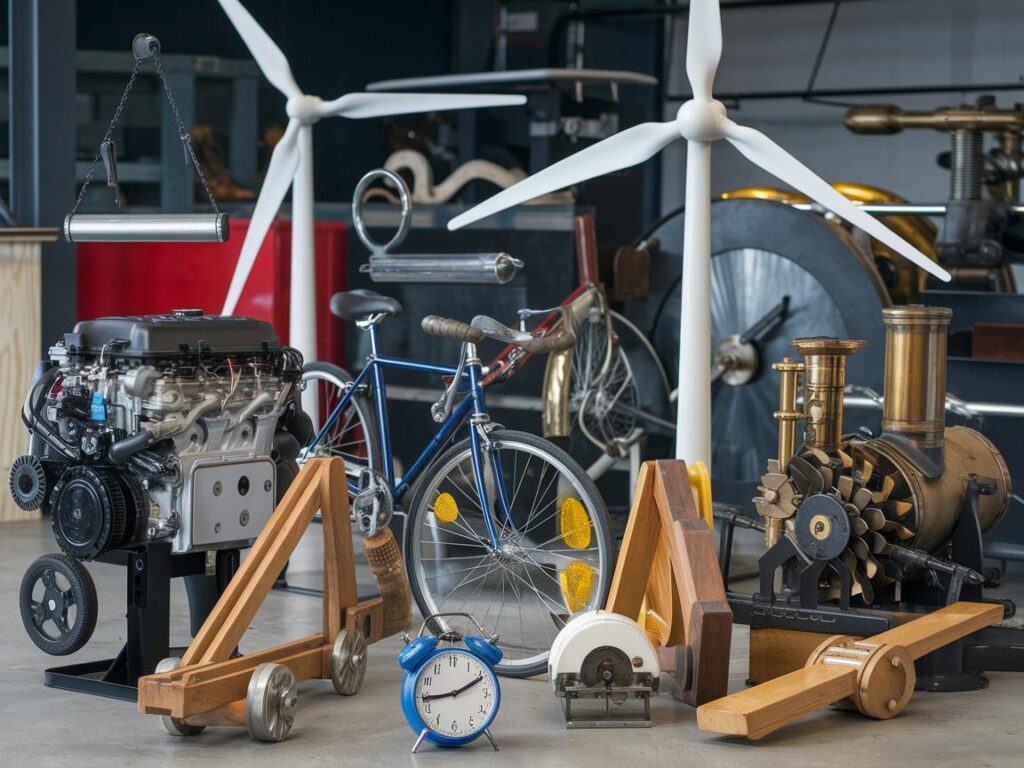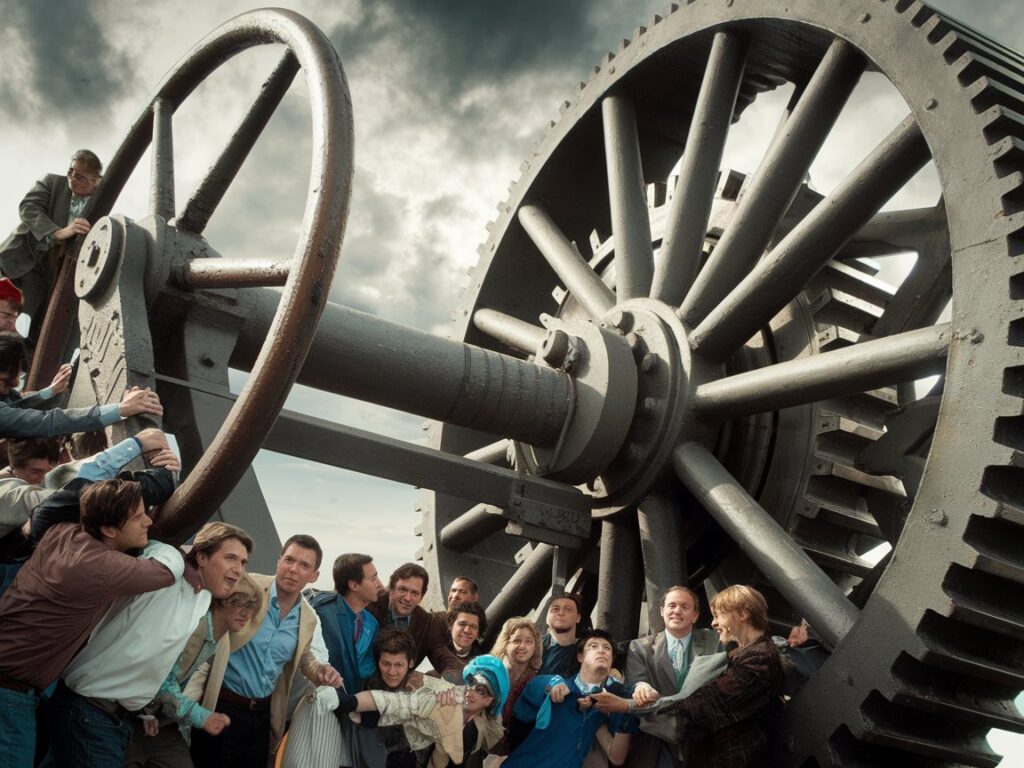Mechanical energy is all around us, whether we realize it or not. It’s the force behind everything that moves, spins or falls. But what exactly is mechanical, and why is it so important? In this article, we’ll dive deep into the world of mechanical energy, exploring its types, how it works, and where we see it every day. By the end, you’ll understand mechanical energy and its vital role in our world.
What is Mechanical Energy?
Mechanical energy is the sum of kinetic and potential energy in a system. In simpler terms, it’s the energy that an object has because of its motion or its position. For example, when you roll a ball, it has because it’s moving. If you lift the ball and hold it in the air, it also has because it has the potential to fall due to gravity.
Importance of Mechanical Energy in Daily Life
Why should we care about energy? Well, mechanical is what makes the world go round—literally! Mechanical is at play, from simple movements, like walking, to complex machinery. Without it, there would be no cars driving on roads, no windmills generating electricity, and no athletes scoring goals. Understanding mechanical helps us appreciate the forces at work in everything.
Types of Mechanical Energy

There are two main types of mechanical: kinetic and potential.
Kinetic Energy
Kinetic energy is the energy of motion. Whenever an object is moving, it has kinetic energy. The faster the object moves, the more kinetic energy it has. For example, a speeding car has a lot of kinetic energy, so it can be dangerous if it crashes.
Potential Energy
On the other hand, potential energy is stored in an object because of its position or condition. For instance, a rock sitting at the edge of a cliff has potential energy because it has the potential to fall. Similarly, a stretched rubber band has potential energy because it can snap back to its original shape.
The Relationship Between Kinetic and Potential Energy
One of the fascinating aspects of energy is how kinetic and potential energy interact. They can transform back and forth, but the total energy in a closed system remains constant. This principle is known as the conservation of mechanical.
Conservation of Mechanical Energy
The law of conservation of mechanical states that in a closed system, where no external forces like friction are acting, the total amount of remains constant. For example, as a roller coaster climbs a hill, its kinetic energy decreases while its potential increases. When it descends, potential energy is converted back into kinetic energy.
Energy Transformation: Potential to Kinetic and Vice Versa
This transformation between kinetic and potential energy happens all the time. Imagine a pendulum swinging back and forth. At the highest point of its swing, the pendulum has maximum potential energy and minimal kinetic energy. As it swings downward, the potential energy converts into kinetic energy, which is highest at the lowest point of the swing.
Real-Life Examples of Mechanical Energy
Now that we understand the basics let’s look at some real-life examples of mechanical at work.
Example: A Rolling Ball
Consider a ball rolling down a hill. As the ball rolls, its potential energy decreases, and its kinetic energy increases. This is a classic example of power in action, where the potential energy due to the ball’s height is converted into kinetic energy as it moves.
Example: A Swinging Pendulum
Another great example is a pendulum swinging back and forth. At the highest point of the swing, the pendulum has maximum potential energy. As it swings down, this energy converts into kinetic energy, which is highest at the lowest point.
Example: Hydropower Plants
Hydropower plants are incredible examples of mechanical being converted into electrical energy. Water stored in a dam has potential energy. When released, this potential energy turns into kinetic energy, spins turbines and generates electricity.
Example: A Moving Car
When you drive a car, you’re witnessing kinetic energy in action. The engine converts fuel into motion, giving the vehicle kinetic energy. The faster the car moves, the more kinetic energy it has, so braking from high speeds requires more effort.
Example: A Stretching Bow
When an archer pulls back on a bowstring, it stores potential energy in the bow. Once released, this potential energy converts into kinetic energy, propelling the arrow forward. This is a clear example of energy transfer.
Mechanical Energy in Sports
Sports are full of examples of mechanical energy, as athletes constantly convert potential energy into kinetic and vice versa.
Example: A Soccer Kick
When soccer players kick a ball, they transfer kinetic energy from their feet to the ball. The ball’s motion is a direct result of this kinetic energy transfer, and the speed and direction of the ball depend on how much energy the player imparts.
Example: A Tennis Serve
In tennis, a powerful serve converts potential energy into kinetic energy. The player stores potential energy by bending their knees and positioning the racket. As they swing, this energy converts into kinetic energy, sending the ball speeding over the net.
Mechanical Energy in Machines
Machines are designed to harness mechanical energy efficiently, converting it from one form to another.
Example: A Windmill
Windmills are classic examples of machines that convert wind’s kinetic energy into mechanical. As the wind blows, it spins the windmill’s blades, generating energy that can be used to grind grain or generate electricity.
Example: A Steam Engine
Steam engines, one of the earliest machines to harness mechanical, use steam pressure to move pistons. This energy was crucial in powering trains and factories during the Industrial Revolution.
The Role of Mechanical Energy in Nature
Mechanical energy isn’t just something humans create. Nature has been using it for billions of years. Here are some natural examples of energy in action.
Example: A Waterfall
Waterfalls are stunning examples of mechanical in nature. As water flows over the edge of a cliff, its potential energy, due to its height, is converted into kinetic energy as it falls. This energy can be harnessed to generate electricity, similar to how hydropower plants operate.
Example: Earthquakes
Earthquakes are caused by the sudden release of stored in the Earth’s crust. Over time, tectonic plates build up potential energy as they press against each other. When this energy is released, it transforms into kinetic energy, causing the ground to shake.
Mechanical Energy in Modern Technology
Modern technology has advanced by leaps and bounds, but at its core, it often relies on principles of mechanical energy.
Example: Roller Coasters
Roller coasters are designed to maximize fun by using mechanical. The coaster has maximum potential energy at the top of the first hill. As it plunges downward, this energy converts into kinetic energy, giving riders that thrilling sense of speed.
Example: Electric Generators
Electric generators, whether in power plants or portable units, often rely on energy to function. For example, in a wind turbine, the mechanical generated by the spinning blades is converted into electrical energy that powers our homes.
Mechanical Energy and Human Physiology
Even our bodies rely on mechanical energy to function. Let’s explore how.
Example: Walking and Running
Walking and running are great examples of how our bodies use. When we move, our muscles convert chemical energy into mechanical, allowing us to lift our legs and propel ourselves forward. The potential energy stored in our muscles is released as kinetic energy with every step.
Mechanical Energy in Construction
Construction sites are full of examples where mechanical energy is put to use.
Example: Cranes
Cranes are essential tools in construction. They use mechanical to lift heavy materials. The crane’s engine generates kinetic energy, converted into potential energy as the load is lifted. This potential energy keeps the load suspended in the air until it’s ready to be lowered into place.
Mechanical Energy in Renewable Energy Sources
Renewable energy is the future, and mechanical plays a significant role.
Example: Wind Turbines
Wind turbines are a prime example of how mechanical energy is harnessed from nature. As the wind blows, it turns the turbine’s blades, generating. This energy is converted into electricity, providing a clean and renewable energy source.
Mechanical Energy in Space Exploration
Mechanical energy isn’t just important on Earth but crucial in space exploration.
Example: Spacecraft Launch
Launching a spacecraft involves immense mechanical energy. The rocket engines generate massive amounts of kinetic energy to propel the spacecraft out of Earth’s atmosphere. This energy allows the spacecraft to escape Earth’s gravitational pull and travel to distant planets.
Conservation of Mechanical Energy in Everyday Life
Conserving is not only environmentally friendly but also cost-effective. Here’s how we do it.
Example: Energy-Efficient Appliances
Energy-efficient appliances are designed to minimize energy waste. For instance, a refrigerator with a high-efficiency motor will use less to keep your food cold, reducing energy consumption and electricity bills.
Challenges and Limitations of Mechanical Energy
While mechanical is incredibly useful, it does come with some challenges.
Mechanical Energy Loss Due to Friction
One of the biggest challenges in using mechanical is dealing with friction. Friction between moving parts causes energy loss, usually in the form of heat. No machine can be 100% efficient, as some will always be lost.
Efficiency Challenges in Mechanical Systems
Improving the efficiency of mechanical systems is an ongoing challenge. Engineers are constantly looking for ways to reduce energy loss through better materials, improved designs, or innovative technologies.
Conclusion
Mechanical energy is a fundamental concept that powers much of the world. From the most straightforward actions like walking to complex systems like wind turbines and spacecraft, energy is at the heart of how things move and work. By understanding and harnessing this energy, we can continue to innovate and improve our lives. The future of mechanical looks promising, with ongoing advancements in technology and efficiency.

